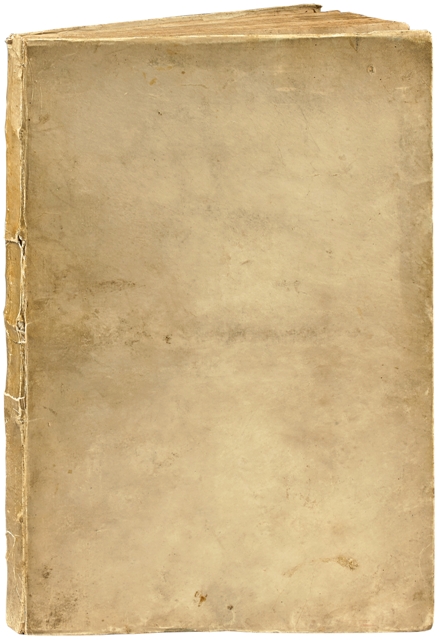Paris, Simon de Colines, 1542. Cum amplissimo Regis privilegio.
Folio [316 x 212 mm] of (1) bl.l., (6) ll. including the frontispiece-title and a full-page engraving, 112 ll., (2) bl.ll., 92 engravings and vignettes in the text. Long handwritten note on the verso of the last l. Limp vellum, flat spine. Contemporary binding.
Rare separated first edition of Oronce Fine’s Cosmographia. Mortimer, French, 226; Brun, p. 189; Renouard, Colines, pp. 358-359.
It is a revised and enlarged version of the third part of the Protomathesis (1532).
This present work is composed of two parts, a first one dedicated to cosmography and a second one to trigonometry.
Oronce Fine (1494-1555) took a course of humanities and philosophy in the college of Navarre, and dropped out of these studies to dedicate himself entirely to mathematics. All the contemporary writers are unanimous in the praises they sing of this professor; They spêk of him with admiration, and indeed, his lessons seem to have aroused the grêtest interest. All the remarkable men of his time, in the arts and in the judicial authorities, princes, ambassadors, rushed to his lessons: the King himself, it is assured, went more than once. The credit of this professor is to have, thanks to the spark of his têching, encouraged the study of exact sciences.
In this trêtise, the mathematician, astronomer and cartographer Oronce Fine, called by Hoefer “the restorer of mathematics in France”, gives instructions for the drawing up of maps by using as an example the South of France and details three methods for the projection of a world map on a plane surface.
The first part encloses “the description of the fixed celestial sphere used for reference, essential idês concerning the astronomy of the ‘primim mobile’ (right and oblique ascensions and the duration of diurnal arcs)” (DSB).
Fine’s cosmography competed with Sacrobosco and Appian’s ones as much with his authority as with his popularity.
The abundant illustration is composed of a superb frontispiece title illustrated with a large frame of liberal arts, here, in first state, of a large full-page plate representing Urania and the author and of 92 expressive figures, 25 of which published here for the first time.
“Of the eighty-nine woodcuts, sixty-four are the original blocks designed by Finé for the ‘Cosmographia’ section of the ‘Protomathesis’. Sixteen of the ‘Protomathesis’ blocks were dropped or replaced” (Mortimer).
A precious wide-margined copy preserved in its original contemporary limp vellum binding.





